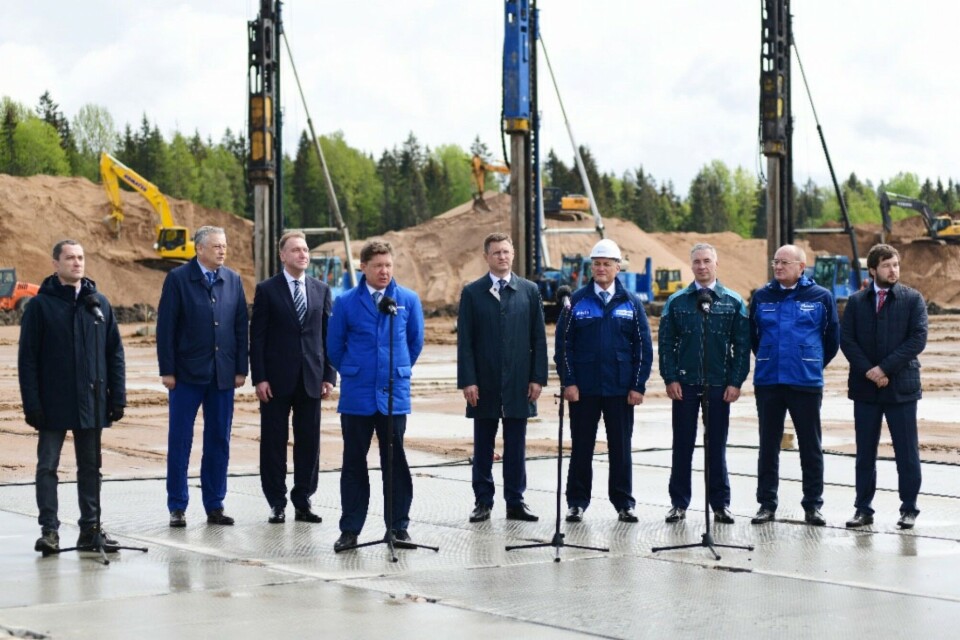
Gazprom's biggest Arctic field will fuel new petrochemical plant
Based on resources from the Tambey field, the natural gas company starts building of a major LNG and polymer plant.
Increasingly troubled by the rapid shift in global energy markets, Russia’s most powerful natural gas company has decided to apply the resources of its biggest field to production of polymers.
Gazprom on Friday officially launched construction of the plant that by 2023 will start production of LNG. Shortly later will be ready an adjacent plant for production of polymers, the company informs.
Polymers are often refered to as plastics.
Together with partner RusGazDobycha, Gazprom intends to produce a total of 13 million tons of LNG and 3 million tons of polymers per year.
The complex will be located in Ust-Luga, near St.Petersburg, and is to be connected by pipeline with the northern tip of remote Arctic peninsula Yamal.
The Tambey field holds as much as 5,2 trillion cubic meters of natural gas and is considered among the company’s biggest undeveloped assets.
For several years, Gazprom has been under pressure from competitor company Novatek to share the resources of the grand field.

In 2017 Gazprom signaled that it might be open for the establishment of a joint venture. And in early April 2021, Leonid Mikhelson tried to convince President Vladimir Putin that the license of the Tambey field should be transferred to his Novatek.
The Tambey is located near Novatek’s Yamal LNG project and Novatek insists that the field is of crucial importance for its additional future capacities.
But Gazprom has declined to cooperate. Now, pressured by Mikhelson’s increasingly intimate talks with Putin, the company is presenting its own alternative project development.
The gas processing complex in Ust-Luga will be the biggest of its kind in Russia. When fully operational, as much as 45 billion cubic meters of natural gas will annually be pipelined to the processing plants, the company informs. In the initial phase, the natural gas will come from a field in the Nadym region, and from 2026, the Tambey will be ready for deliveries.
Company subsidiary Gazprom Nedra will now establish the Tambey Gazodobycha, a joint venture with RusGazDobycha, and the licenses to the Tambey field will be managed by this enterprise.
“Here, in the northwestern corner of the country, in Leningrad Oblast, we start construction of a principally new high-tech industrial cluster that will be extraordinarily important for the region and the country,” Gazprom CEO Aleksey Miller said in a ceremony on Friday.
“This kind of advanced processing is the most efficient path to exploitation of the huge resources of ethane-holding gas in Russia,” he added.

On site in Ust-Luga were also distinguished government representatives, among them Deputy Prime Minister Aleksandr Novak.
The petrochemical plant will produce ethane that subsequently will be used to make polymers.
The highly hydrocarbon-dependent Russian economy is now under growing pressure from the world’s rapid shift towards renewable non-fossile energy sources.
In December last year, the Russian First Deputy Prime Minister Andrey Belousov set up a working group that is to propose ways forward for the energy region.
That same month, President Vladimir Putin attended a meeting on petrochemical industry development in the Siberian town of Tobolsk
“We have to more actively promote Russian petrochemical production domestically and abroad and boost efficiency and production volumes,” Putin underlined in the meeting and made clear that several major projects worth about 5 trillion rubles are under planning.
According to the President, a total of 14 projects on new petrochemical production are on the table. Including in the Arctic.
Gazprom has vast reserves of natural gas in the Arctic and the company fears that new projects might ultimately not meet demands.
In 2019, representatives of Gazprom hinted that they are planning the construction of a gigantic petrochemical plant in Bovenenkovo, the company hub in the Yamal Peninsula, that is to be able to produce about 3 million tons of plastics products polyethylene and polypropylene per year.
Polyethylene and polypropylene are widely used for labelling and packaging. They are commonly produced with use of natural gas.
















